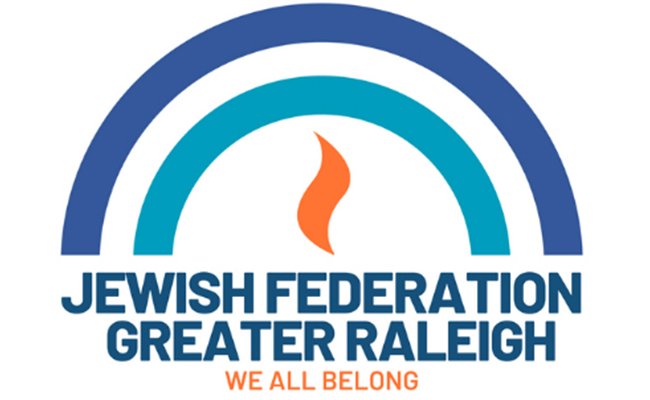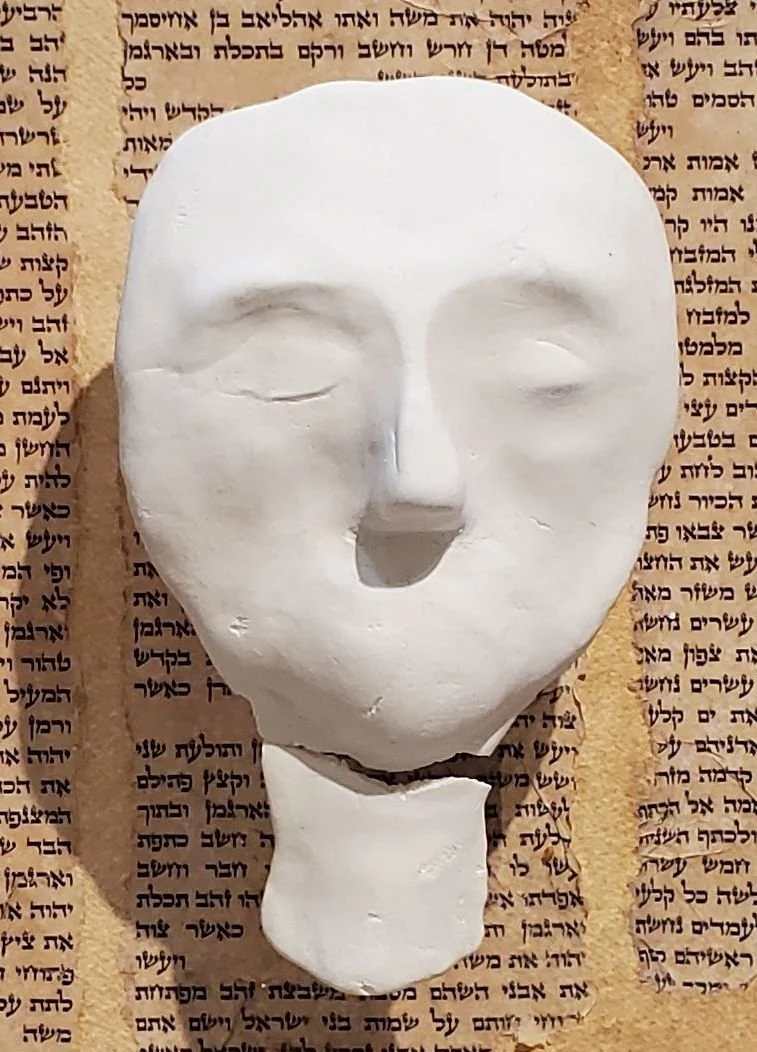Interview with an Artist: Tina Marcus, “Art Through Torah”
Today, we interviewed local artist Tina Marcus. Tina is the volunteer chair for Chagall Society, our affinity group for Jewish visual artists in Wake County.
Tina Marcus, “The Records of the Tabernacle and Faces of Time”
Q: How long have you been in Raleigh, and what brought you here?
A: We’ve been here for 27 years. My husband helped a company sell successfully and he decided to go out on his own afterward as a consultant. We had been to North Carolina before, and he decided that if we could live anywhere, he wanted to explore NC. The Chamber of Commerce here was awesome, and we felt the most comfortable in Raleigh. (Also, the French Riviera wasn’t a realistic option!) I worked with him in business development until he got a partner, then I worked with the NC Department of Public Instruction. I had a 20-year career in academia, most recently developing STEM education state-wide.
Q: What themes do you like to explore in your art?
A: The basic premise of my work is what I call “soul selfies.” People are taking pictures with their phones, but I paint snapshots of defining moments in my life. I focus on historical, spiritual experiences that affect the human soul. The themes revolve around aging, solitude, isolation, and ambiguity. The last few years was really a fast-forward to taking a deep dive into what was important and meaningful.
Q: What artistic media do you like to work with?
A: My medium are multi-media assemblages. Working with found objects and mostly with powdered pigments, spray paint, modeling medium, and flooding canvases with water and varnishes, my approach is grounded in the unexpected, spontaneity, chance, and experimentation.
Powdered pigments are the essence of paint, acrylic or oil paints. My works are on canvas, where I flood them with the pigments, spray paint, water, and varnishes. Most people start with stretched canvas and paint on top of them, but I start with an unstretched canvas so that I can manipulate the canvases. My figures are poured with a modeling medium, a viscous material which get assembled on top of the canvas and then they get formally framed out. These figures are basically bas-relief in texture, similar in the art from the Greco-Roman era, with some depth to it. It’s hard to describe until you see it in person. It’s a bit of a backward process, but that’s how I work.
Q: How did you get involved in Art Through Torah? What was the process for it?
I have an Instagram account, and saw a post from the Jewish Art Salon that was looking for art submissions on the theme, “Creativity in an Uncertain Time.” That’s right up my alley, and I had already been delving into that in my studio. I started to create art based on that, and submitted some samples. They selected my work, which meant I was to give a presentation with other artists from around the world. Over 90 people were on the Zoom call to listen.
They were also advertising other opportunities, including The Amen Institute. They had a fellowship project, where you get paired up with a rabbi. They do art through Torah with the parsha, the weekly portion. The artist and rabbi read their portion, and the artist creates a piece of art through this discussion. I was paired with Rabbi Eryn London in the UK. We were assigned Parshat Pekudei, the last chapter in Exodus. The Amen Institute created a pathway for Art Through Torah. It’s basically looking and taking a deeper dive into the parshiot (portions), extrapolating the meeting from the rabbi’s and artist’s point of view.
Q: What did you think after reading Parshat Pekudei?
A: I read it and said, “Wow, this seems really straightforward.” These are the materials that describe what was needed to make the Tabernacle. Other parshiot seemed to have more deep philosophical meaning, this one was talking about architecture, materials, money. It seemed simple, but it’s not once you peel away the layers. While they explained all the materials, Moses knew he couldn’t do it alone, so he brought in the Levites to build the structure and make the garments. That in itself is very challenging. The essence of the piece came from, what did it mean to be a Tabernacle? For me, the biggest meaning was, did we need an architectural structure when each of us has a Tabernacle within us? We are that space where we can fulfill G-d’s will, wherever we go. That was the big piece that came out for me. I created faces, because no one could do it alone. It takes all the different people from the community. I didn’t use colors because that felt like it was getting in the way for me. I made it like a piece of pottery that an archeologist would find. (Read more here, or watch Zoom talk with Tina and Rabbi Eryn London.)
Q: How would you describe your relationship between Jewishness and art?
A: Going back to my “soul selfies,” I am documenting experiences that affect the spirit and the soul. To me, it’s one in the same. It comes from my body and soul when I create. It’s in lock-step.
Q: Is there anything else you would like people to know about your Art Through Torah project?
A: It’s been fascinating to hear and see and listen to all the artists that have been a part of this project, and what each Rabbi and each artist developed and the outcome—physically, spiritually, emotional. Since I’ve never been involved in reading the parsha of the week, this project has encouraged me to read further and take deeper dives into other readings.
Q: What kinds of pieces do you have showing next?
A: I have a piece that was accepted into the Dr. Bernard Heller Museum in NYC, the Tzedek Box Project. I learned that Tzedek and Tzedakah are different. I created a collection box made of old bed frame and twine, and stones that we collected on a visit years ago to Dachau, the concentration camp in Germany. The box itself is a ritual object, something that the Jews in the concentration camps were able to create. It’s a collection box where Jews could go and give Tzedakah and be thankful for living another day. The one thing they could place in there were stones, so the stones represent Tzedakah. This will be part of an ongoing exhibit there, and maybe travel to other Dr. Bernard Heller exhibits.
Meet Tina and other local Jewish artists at Art Madness, a networking event open to all affinity groups! Click here to register.


